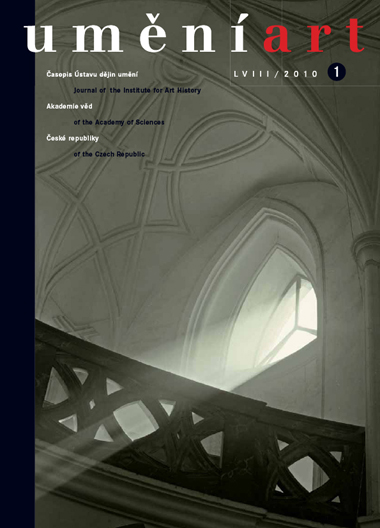Michal Šroněk - Kateřina Horníčková
Der Cranach-Altar im Veitsdom - seine Entstehung und sein Untergang
Around the year 1520 an altar was commissioned for St Vitus Cathedral in Prague and was made by Lucas Cranach. Depicted on the altar were the figures of the Virgin Mary and Sts. Apollonia (?), Agnes of Rome, Dorothy, Catherine, Barbara, Margaret, Christine, and Ursula. The location of the altar had thus far been in the Chapel of St Sigismund, but it was clearly intended for the cathedral's Marian sacrarium. Charles IV founded a corps of missionaries there, who were also assigned with the task of attending to the soul of the royal benefactor. Karel planned to locate the royal sepulchre there, and, although the burial place was changed, an Imperial cenotaph was left in the Marian sacrarium as the place of the ruler's memorie. The bond between the Imperial monument and Marian devotion remained vigorous even later on, and Ferdinand I re-established here the liturgies in veneration of the Virgin Mary and in memory of deceased monarchs. The importance of this place as a centre of monarchical prestige culminated in the founding of the royal tomb with the 'Habsburg Mausoleum', which marked the fulfilment of Charles' initial idea, and required the creation of an altar with liturgical allusions to monarchical and Marian devotions. Cranach's tablet was well suited to such depictions. In December 1619 the Cathedral suffered destruction from an iconoclastic attack, and the altar in the Chapel of St Sigismund was allegedly destroyed on 27-28 December. At that time the priest Friedrich Salmuth and some carpenter cut seven tablets out of the altar, and these were later documented in the castle inventory. However, they were cut in such a way that none of the heads was damaged - this action was not the work of mindless destroyers or ideologically motivated efforts to remove the objects from religious services, but rather was the work of a craftsman trying to protect, probably at the urging of King Friedrich himself, whatever he could. The altar's demise can thus with certainty be said to have been not the result of planned or spontaneous iconoclastic destruction, but was a contemplated step disguised as an iconoclastic act.
Full-text in the Digital Library of the Czech Academy of Sciences:
https://kramerius.lib.cas.cz/uuid/uuid:23f165c3-1ed7-1bfc-f17d-ff26751156ef
< back

